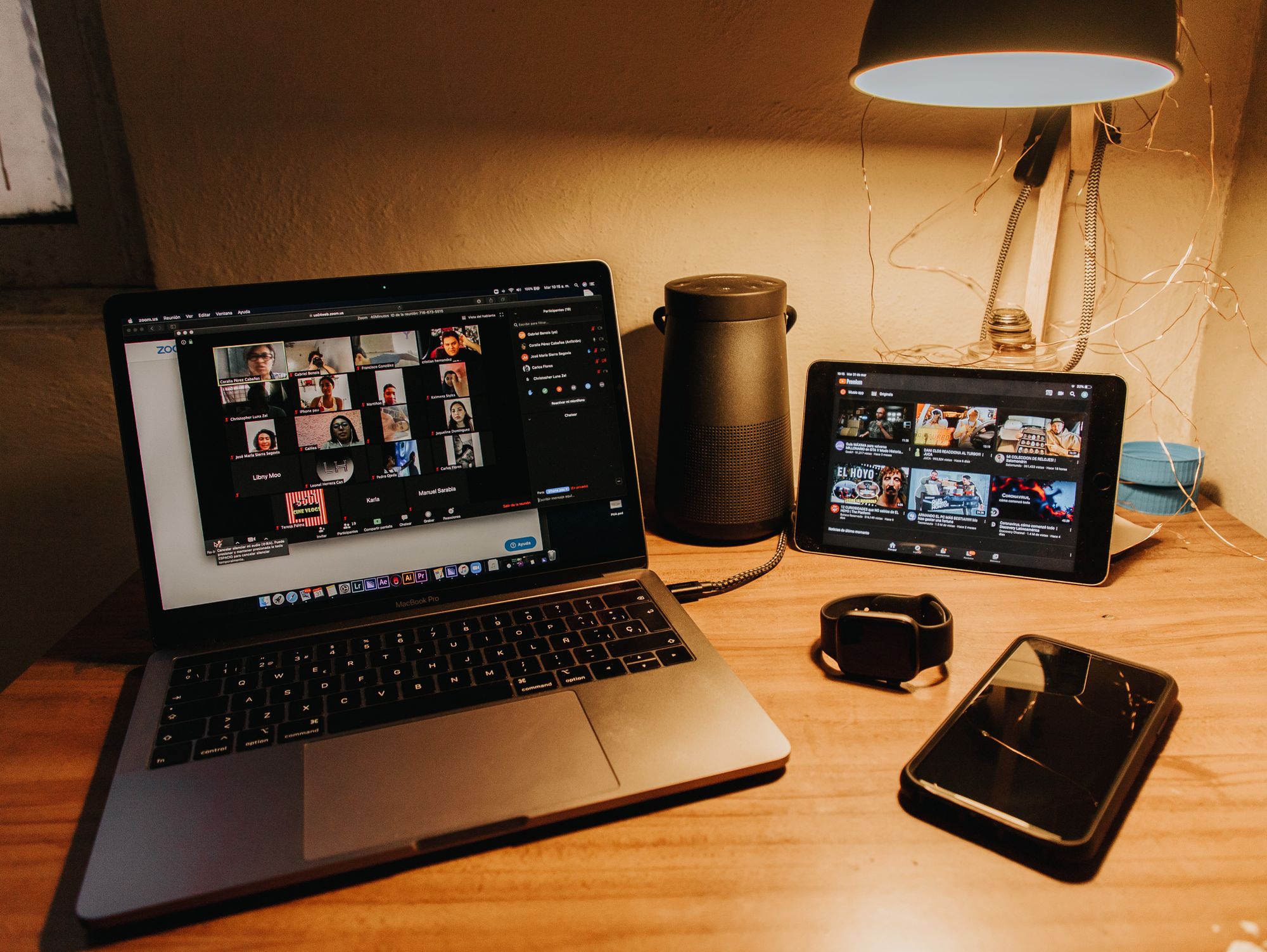Mental health in the workplace can be difficult to manage. But when you're dealing with the wellbeing of employees working remotely, it can be even more complicated.
The recent pandemic has greatly impacted our mental health, resulting in thousands experiencing feelings of isolation, stress, and financial uncertainty. In fact, since the beginning of the coronavirus outbreak and the subsequent months of lockdown, there has been a 60% increase of people accessing mental health services in the UK.
But, whilst mental health awareness has become more prevalent in mainstream conversations, there is still stigma around discussing mental health at work. Nearly 60% of professionals report being too embarrassed to disclose their mental state at work, whilst another 65% claim they would feel guilty asking for time off for mental health reasons.
If things are to change, there needs to be more mutual trust and honesty around mental health between employers and employees. And this is even more important when in regard to the wellness of remote workers.
So, to keep your WFH team feeling safe, healthy, and happy, here is our guide to managing mental health virtually!
Here's what we'll cover:
- Allow flexible working hours
- Have the right work-life balance
- Reduce hours
- Cut down on daily meetings
- Create a positive company culture
- Conduct regular check-ins
- Promote healthy patterns
- Lead by example
- Host social events
- Check your benefits package

Allow flexible working hours
Being in control of how and when you work can be a huge perk for many employees, especially those prone to burnout or anxiety. Adopting flexi-time practices in your business can enable your employees to manage their own working hours and be more in control of their wellbeing.
Introducing flexible hours allows employees to work when they are at their most productive and grounded, increasing performance by preventing digital presenteeism, which occurs when workers are online but mentally switched off. Not to mention, working on a flexi-time basis is also said to hugely reduce stress, giving employees more freedom to balance their work and personal life.
For this reason, flexi-time is one of the more inclusive practices you can adopt, as it allows parents and carers more time to fulfil their caregiving duties, and it can be a godsend for those struggling with mental health issues or chronic pain.
Have the right work-life balance
When your office and your home are the same place, work can often dominate and invade your personal time, making it hard to gain a healthy work-life balance. It's important that, as an employer, you promote methods for maintaining the right balance to your remote team members.
To help your employees create a physical boundary between work and home life, you could invest in proper home office equipment for your staff, such as desks and chairs. You could also implement a strict 'no after hours contact' policy to discourage staff from continuing to work outside of their set working hours.
Aside from creating a happier workforce, promoting healthier work-life balance also serves as a solid employee retention plan, as companies with set boundaries around professional and personal time report a 25% higher staff retention rate than those which don't. So, whatever your business size or budget, prioritise finding a way to ensure your staff are switching off from work and enjoying their free time.

Reduce hours
Long working hours are proven to have a direct negative impact on people's mental health, yet the average full-time working week still consists of up to 40 hours. However, many employers are starting to dabble with the 4-day working week, and are reporting incredibly positive results.
Although it may sound counterintuitive, ditching longer hours is actually good for business. Shorter working weeks lead to increased productivity, better employee engagement, and decreased stress levels. Studies have also shown that employees on 4-day working weeks log less sick days and report much better mental wellbeing than those working longer working hours.
And, it's no surprise. Employees spend less time trying to work through the burnout and instead are able to properly rest, enjoy their hobbies, and spend time with family members, coming back to their role feeling productive and motivated.
Cut down on daily meetings
Remote working relies on online platforms and video calls, we know. But when every second of your day is booked up in progress meetings and team check ins, stress is inevitably going to creep in. Try and keep the daily meetings down to a minimum to increase the productivity of staff and avoid overwhelming them with video calls.
Laying back on the meetings means staff can crack on with their work and not fear they're lacking behind because they've got hours of Zoom calls to attend. If you need to get in touch about something easily explainable, simply email or instant message your employees instead.
It might even be a nice idea to try 'no call' days, where nobody is allowed to schedule any meetings and the whole day can be dedicated to get stuff done. For people struggling with mental health issues, a day where they don't have to make the effort to look and sound presentable can relieve a lot of stress.

Create a positive company culture
How you build your company culture has a huge impact on all aspects of your business, from your talent acquisition methods to your staff retention levels. So, ensure you are building a company culture which allows workers to open up and seek help when it's needed.
Normalise talking and asking about mental health with your employees, and be sure to listen to their concerns when they answer. It sounds small but opening this line of communication with employees can make a really big difference.
You can even take your commitment to employee wellbeing a step further by investing in mental health training. Not only will this demonstrate your company's dedication to opening up a mental health dialogue, but it will mean line managers will be better equipped to recognise and handle mental health crises as they arise. If you do a bit of research, you'll find hundreds of webinars online that cover how to identify signs of mental illness amongst staff and how to handle them in a home working situation.
Conduct regular check-ins
When you're not face to face with your employees, it's incredibly difficult to notice if something is off or if they are not being themselves. This is especially hard if you only communicate via instant messaging or email. That's why it's especially important to make sure you conduct regular check-ins with staff to stay in the loop with how they are doing.
Frequent one-on-one conversations over the phone or on a video call are bottom-line to overcoming roadblocks, both professional and personal. Whilst there is still a lot of stigma wrapped around discussing mental health at work, giving your employees plenty of opportunities to talk openly about how they are feeling lets them know that they are safe to come to you if they need help or support. Additionally, to encourage more honesty and eradicate any shame, you could also send an anonymous wellbeing survey each month, giving those who feel incapable of disclosing their mental health issues a chance to speak from the heart.
That said, you should definitely normalise group discussions about any issues facing your team as well. This way, co-workers can get any work anxiety off their chest and work together to brainstorm ways to resolve any struggles, whether that means getting help on a task or being given extra time to complete it. Problem-solving sessions like this can help alleviate stress amongst workers feeling overwhelmed and can help avoid burnout.

Promote healthy behaviours
Now, we know that mental health problems are not something that can be solved solely with a good diet and an exercise plan. But, when you're mentally strung out or feeling low, it's important to make sure your physical health is not falling behind. Eating junk and drinking too much will only make things worse. For this reason, you should try and promote healthy behaviours amongst employees to keep motivation and moods up.
Here are some ideas for encouraging healthier habits with staff:
- Block out hours specifically for activity - Once or twice a week, get your employees to block an hour out of their calendar to do something active, such as going for a run, doing some yoga, or even just doing some gardening.
- Schedule in some ‘walking meetings’ - Conduct meetings with your co-workers over the phone whilst going for a nice walk.
- Consider a subsidised gym membership - If your employees are really into fitness as a way to stay on top of their physical and mental health, then consider helping them pay for their monthly gym membership fee.
- Encourage staff to adopt a healthy diet - Share nutritious recipes or tips for a healthier diet via your work Slack or messaging channel.
- Be conscious of promoting or glamorising alcohol consumption - Lockdown saw a 58% increase of individuals drinking a high-risk level of alcohol. For this reason, if you do organise an in-person meet-up, try not to make it an alcohol-centric event.
Leading a healthy, active lifestyle is linked to better moods, reduced stress, and improved sleep, so encouraging your employees to take some time to do a bit of exercise or cut back on drinking is a great way to help curb poor mental health.

Lead by example
Even if you support and champion the wellness of your employees, it doesn't change that many people still really struggle to open up or be honest about what they are going through. But one of the best ways to bridge this gap is to model the self-care behaviours you want your employees to adopt.
This could mean being open about your own struggles or anxieties during check ins to let your employees know that mental health is something you are comfortable and open to discussing. However, as we all know, actions speak louder than words, so show your commitment to mental wellness by setting your own boundaries and taking time off for rest and recovery.
Additionally, you could also start a Slack channel or group message dedicated solely to sharing ideas for self-care, such as yoga in the local area or interesting blogs you've found about how to avoid burnout. This encourages the conversation around mental health and inserts yourself into it as someone who is an actor of positive mental wellness.
Host social events
Granted, this one is tricky when you run a business remotely. But there are plenty of ways to be sociable when your staff are all working from home. Keep your team cohesive and host monthly e-parties, ranging from virtual lunches, quizzes, or team-building exercises.
Make sure you book an hour or two out of everybody's schedule so that all employees can attend the online events and focus on socialising with their co-workers. If you want something a bit more exciting, research fun online group events that you and your staff members can participate in, such as floral arrangement classes or a drawing workshop.
Whatever you choose, remember that it's all about enhancing the social connectedness of your team members. By keeping them connected, your staff will be more likely to seek out support from co-workers or managers if they are struggling.

Check your benefits package
Job perks and company benefits are a huge drawing card for prospective and existing employees. In fact, roughly 80% of people state they'd rather have good job perks over a pay rise. With this in mind, it might be time to re-evaluate your benefits package to see if there are more opportunities for your business to support staff members.
Try to implement certain benefits that directly support your employee's mental health, such as 'mental health days' in which staff have a set annual allowance to take off for self-care and prioritising their wellness. However, you can also make sure you're including benefits that indirectly address and impede stressors and anxieties, such as childcare support, private health insurance or equal parental pay.
But, if you're on a tighter budget, don't worry. Benefits packages don't have to break the bank. In fact, you can cut costs and boost employee satisfaction in one fell swoop by allowing your staff to pick their own benefits. This will allow them to choose things they'd find the most rewarding whilst scrapping the ones which don't apply to them.
Final takeaway
When it comes to improving and managing the mental health of your employees, finding ways to increase employee satisfaction and engagement are just as significant as allowing time for rest.
Our mental health and wellbeing are pivotal to how we are able to concentrate, function, and thrive. Just as we take active steps to improve our physical health in our day to day, we should be taking preventative measures in our workday to keep our mental state in tip-top condition.
By following these steps and making an effort to be vulnerable and transparent with your workforce, you can help your employees be as happy and grounded as possible.






